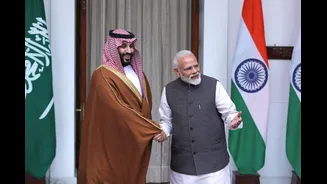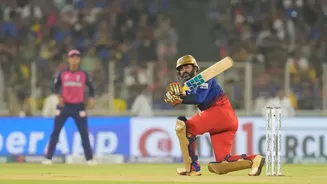The Ahmedabad Court's Verdict
The recent verdict from an Ahmedabad court has brought the spotlight back to the 2002 Gujarat riots. The court chose to acquit three accused individuals,
the decision being hinged on the absence of sufficient evidence to prove their guilt. The legal proceedings spanned a lengthy 23 years, underscoring the complexities involved. The prosecution's case faced a significant setback when the videographer, who claimed to have captured the accused with firearms, including an AK-47, retracted their initial statement. This crucial shift in testimony was further compounded by the disappearance of the video tape, which was supposed to be crucial in the case. Many witnesses turned hostile, undermining the prosecution's efforts. The court ultimately concluded that the evidence presented was not strong enough to convict the accused, resulting in their acquittal after decades of legal battles.
Missing Videographic Evidence
A pivotal element in this case was the 'hard videographic proof' that vanished. The videographer's initial statement, which implicated the accused, was crucial for the prosecution. However, the unexpected retraction of this statement changed the course of the trial. The disappearance of the video tape, which was meant to be the core evidence against the accused, further weakened the prosecution's arguments. This absence of critical evidence significantly impacted the court's ability to reach a definitive conclusion. The role of evidence in the judiciary system is critical. The absence of compelling, verifiable proof creates considerable hurdles in ensuring justice. This scenario exemplifies how crucial evidence can shape the final verdict. The disappearance of this 'hard videographic proof' became the centerpiece of the court's rationale for acquittal.
Witness Testimony Shifts
During the protracted 23-year trial, the prosecution encountered several obstacles, with a significant challenge being the shifting testimonies of witnesses. Many witnesses, who were initially expected to provide supportive accounts, later altered their narratives, effectively turning hostile. This critical shift made it more challenging to establish a consistent chain of evidence, as the accounts of individuals who had witnessed the events became unreliable. The legal process emphasizes the importance of consistent and reliable testimony. When these accounts are contradictory or altered, the validity of the evidence is questioned. It became increasingly difficult for the prosecution to establish the truth of the events because the original accounts were no longer credible, which presented a significant obstacle to securing convictions. The changing testimonies eventually contributed to the weakening of the prosecution’s case.
Implications and Aftermath
The acquittal of the three accused has several implications. The decision has brought attention to the challenges of prosecuting cases that depend on crucial evidence. The absence of the video and the changing testimonies by the witnesses have raised questions about the legal process itself. The ruling has also reignited discussions about the importance of safeguarding evidence and securing witness testimony, especially in cases that involve high-profile incidents. For the families of those affected by the 2002 Gujarat riots, the verdict may have brought a mix of emotions. While some may have hoped for justice, the acquittal may have instead brought disappointment, given the long process. The absence of closure underscores the need for effective investigation, evidence preservation, and witness protection in sensitive cases to ensure that justice is administered without any barriers.

















